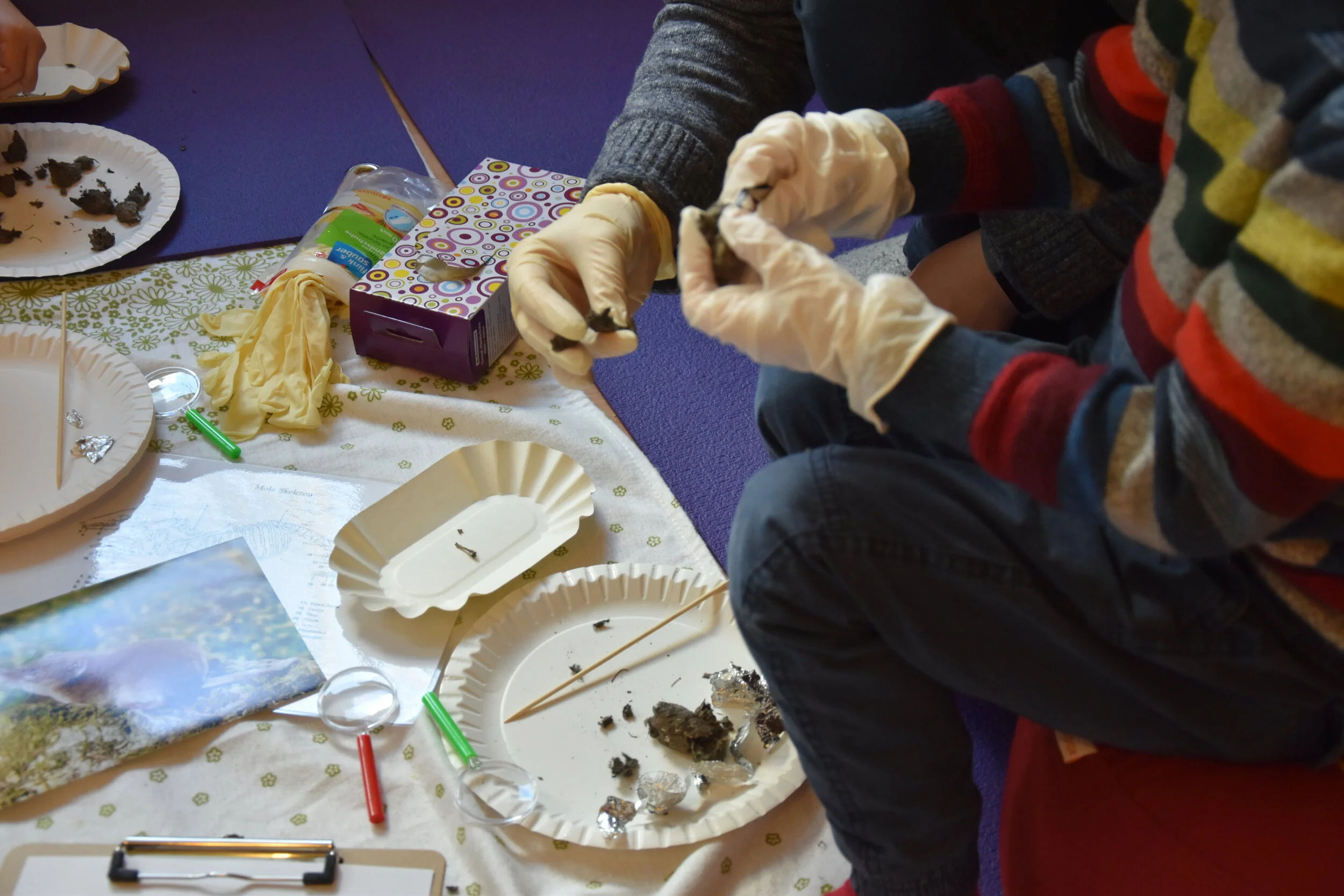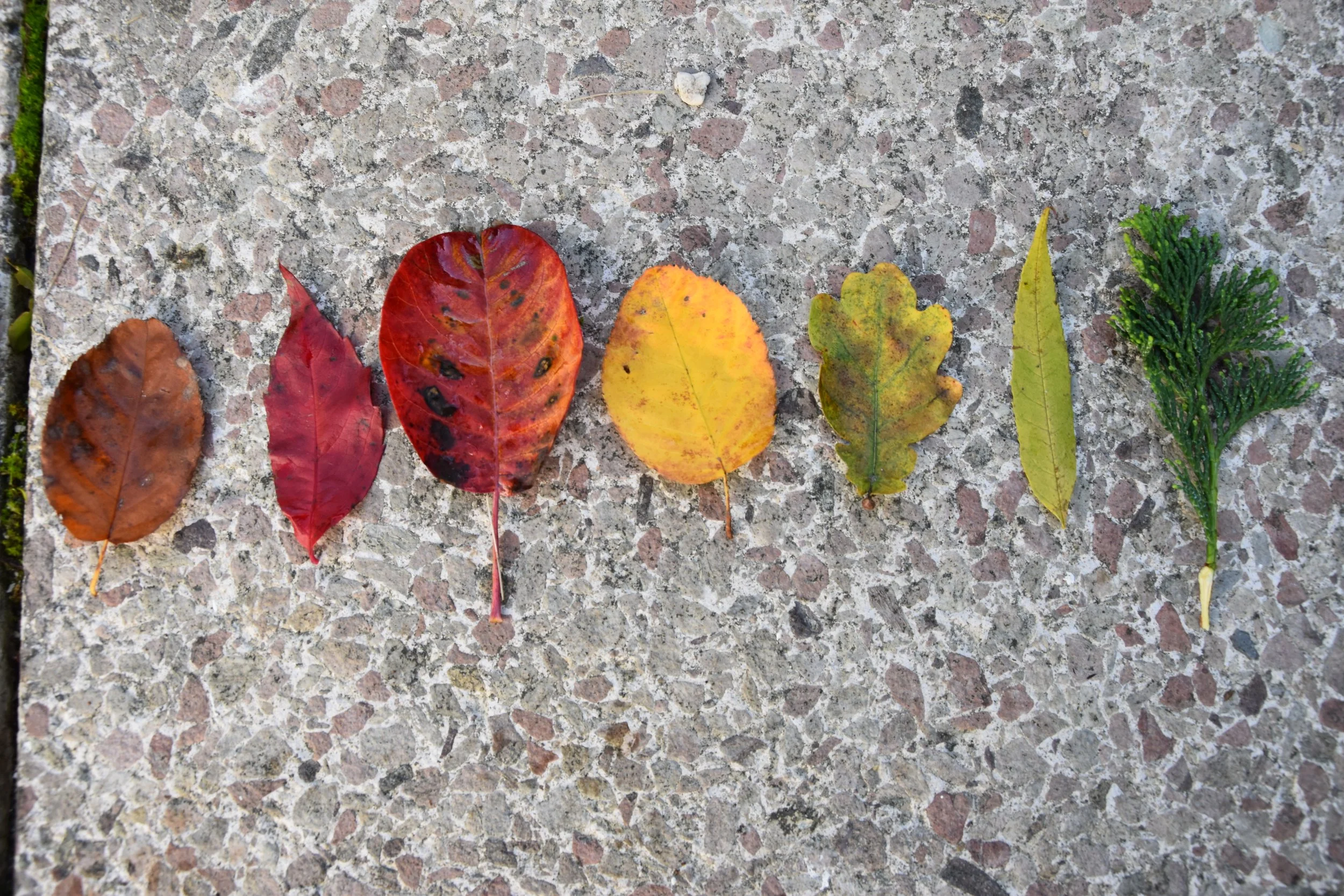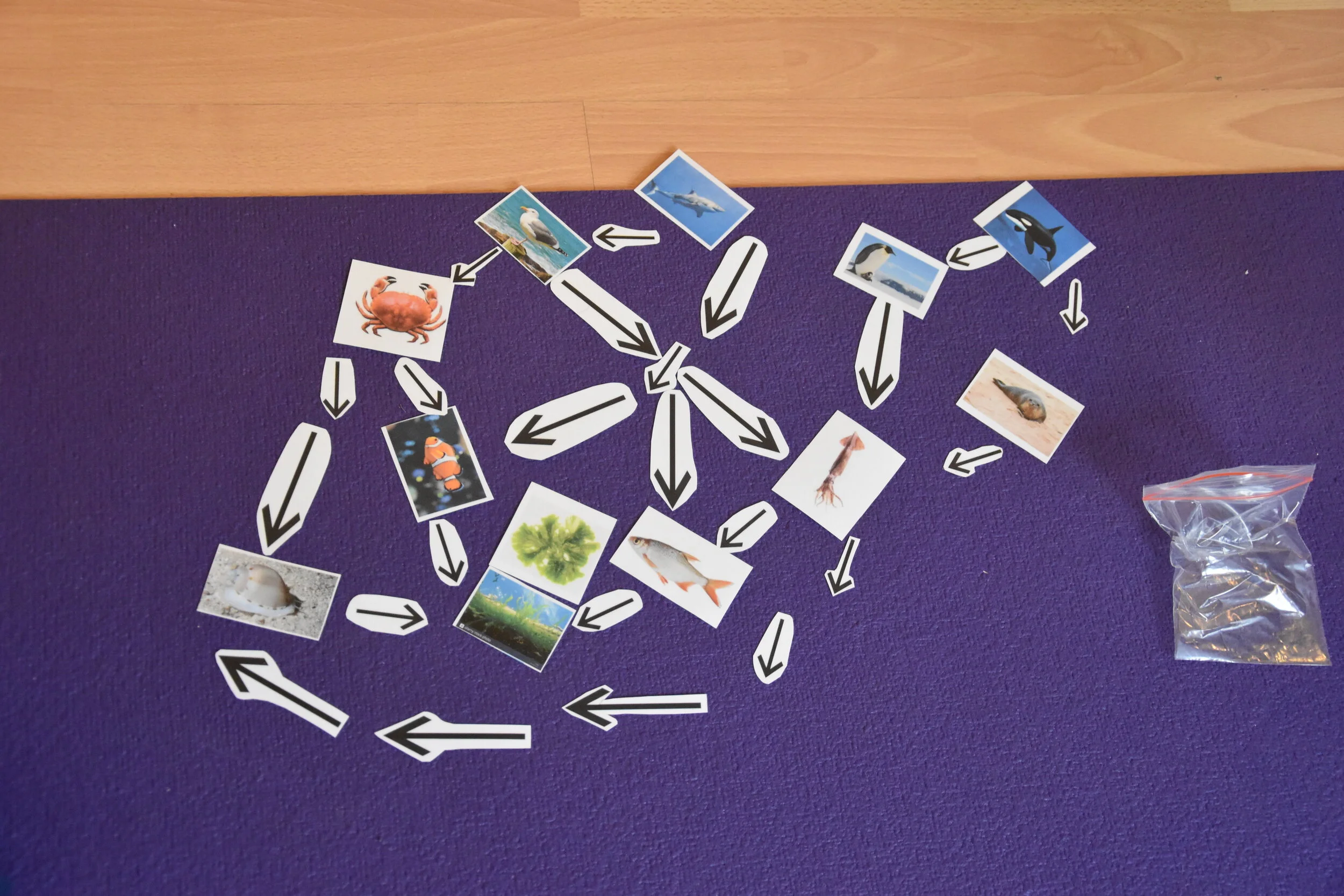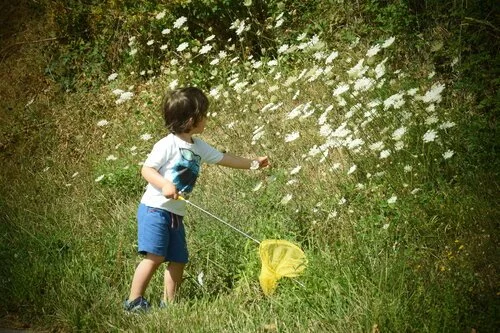Scroll down for the specific nature science activities offered, they are conducted both indoor (in kindergarten and schools) and outdoor (in parks and forests). For a full description of how activities are structured and what materials are used, please go to ‘Description, structure, material’
Below a list with specific topics that can be combined.
Non-specific topics, like general exploration of local wildlife and plants, are as well available.
Teachers are welcome to choose, or Dr Sandra Tranquilli will choose according to the season a few days prior to the meeting.
Tracks and Signs - Animals are not easy to spot, but they often leave tracks and signs behind. We identify signs (animal constructions, bones, feathers, leftover meals), and examine and measure tracks (e.g. how many toes an animal has, how the bottom surface of a foot looks like, the claws, etc) these will tell us who is living in the forest and city parks and all about their activities. We create our own fantastic story with footprints using stamps, paints, clay, and build a footprint stamp.
Animal homes - All animals build a home to protect themselves, to sleep, to eat, and to reproduce, using different materials. We examine what are the main characteristics of a home, like materials and shape, and understand why these are important and what are the similarities and differences among the different animal species (e.g. invertebrates, birds, mammals like squirrels, mice, foxes, badgers, etc). We build houses for birds, insects, spiders, and hedgehogs, and nesting material dispensers using natural and recycling materials.
Body Parts - We examine with the microscope bones (e.g. fox, rabbit, mouse, bird, frog, deer, hedgehog, weasels, squirrel, bat), skins (e.g. snake, frog, bat), feathers (from different species), insect wings (e.g. butterflies, bees, flies) and hair (e.g. fox, badger, rabbit, deer, wild boar, squirrel). We look at how they are structured, their function, and which part of the body they come from using animal body parts charts, etc.
Shapes and Colors - Nature provides different multitude of colors, shapes, and patterns, with some of them changing over the seasons. We observe plant parts (like leaves, flowers, barks, and seeds) and animal parts (like snail shells, feathers, houses, eggs, footprints, etc), and understand the meaning and importance of shapes, sizes, and colors in nature. We create crown, puzzles, rainbow prints, globes, etc
Food Webs - We learn what is a food web and what are food chains, and why these are important for the whole ecosystem of our forests and parks. We learn the definition of predator and prey, and we build food chains of animals living in the forest to understand who is eating what and compare to those who live in the desert, savanna, and tropical forests. During our nature walks, we search for possible food remains, examine them with microscopes (e.g. eaten leaves, barks, seeds, bones, feathers) to better understand the food chains of our forest, and create nature journals.
Plant parts: flowers, fruits, seeds, and leaves - We identify the structure of a plant (e.g. leaves, flowers, seeds, trunk, branches), the function of each part, and the needs of plants to live (water, light, soil, temperature, nutrients, etc), how they change through the year, and how do plants reproduce (seed dispersal and pollination). We learn how to identify common plants, herbs, flowers, fruits, and vegetables, and look at their chemical properties and uses, and create pots, herbariums, sachets, and prints.
Invertebrates - We give a close look at how invertebrates are made (i.e. body structure and color significance), how they are classified, discover where they live (in the grass, on flowers, under logs and stones, in the air), how their home is made, why they are crucial to biodiversity and their main threats. We focus on butterflies, spiders, slugs, snails, beetles, etc., and help those in need against their decline by building hotels with natural and recycling materials.
Forest animals - We focus on the most charismatic animals living in our forests and parks, like the fox, the hedgehog, the squirrel, the deer, the badger, etc. We learn why most animals live at night and how they have developed different strategies to survive in the dark and against predators, their life cycle, what they eat, their footprints, how they build their houses, and how to track them. We search for their signs in the forest and observe their behavior with binoculars and through camera trap footages. We create shelters, homes, trash free trails.
Birds - We study which species occur in our parks, gardens, and forests, and examine in detail their feathers, colors, nest constructions, eggs, songs, similarities, and differences among species. We do birdwatching during nature walks and identify birds by their color, size, and sounds. We look at their major threats and ways how to help them to survive in the city, like building bird feeders, homes and providing nest materials.
Freshwater wildlife - We observe all wildlife living around and inside a river, pond or lake (e.g. frogs, snails, dragonflies, birds and fishes) and their life cycle inside and out the water. Water samples are collected from ponds, rivers and forest puddles and are examined under microscopes to observe which animals and plants are there, how they are made and their life cycle stage.
Plant life cycle - We examine in detail all stages of the plant life cycle, beginning with seed germination, growth, reproduction, pollination, fertilization, the formation of fruits and seeds, and seed spreading. We create little house gardens using natural and recycled materials and observe the plant stages while growing.
Mushrooms – We explore the fantastic world of mushrooms. We look in detail at how a mushroom is structured, identify the classification, how it reproduces, the meaning of colors and shapes, which animals eat mushrooms, and finally, why they are important for the whole ecosystem and what we can do to protect them. Mushrooms are dissected and examined with a digital microscope, and spore prints are made to better understand their structure and their reproduction.
Lichens – We examine the complex form of lichens, and their symbiotic association with mushrooms, algae, and bacteria. We learn what are their specific requirements for their habitat (water, air, light, nutrients), their reproduction and fruit bodies. We learn how to group them, identify which species occur in our parks and forests, and their crucial role in the ecosystem. We make nature prints to comprehend their characteristics.










































































































